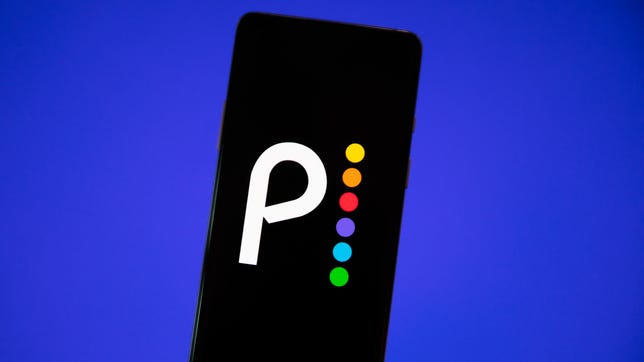Technologies
Peacock Review: Free TV May Hook You, But You’ll Need a Paid Plan to See Everything
Hours of ad-supported free content is available to stream, but a paid account may not be worth it to watch live sports or Yellowstone.
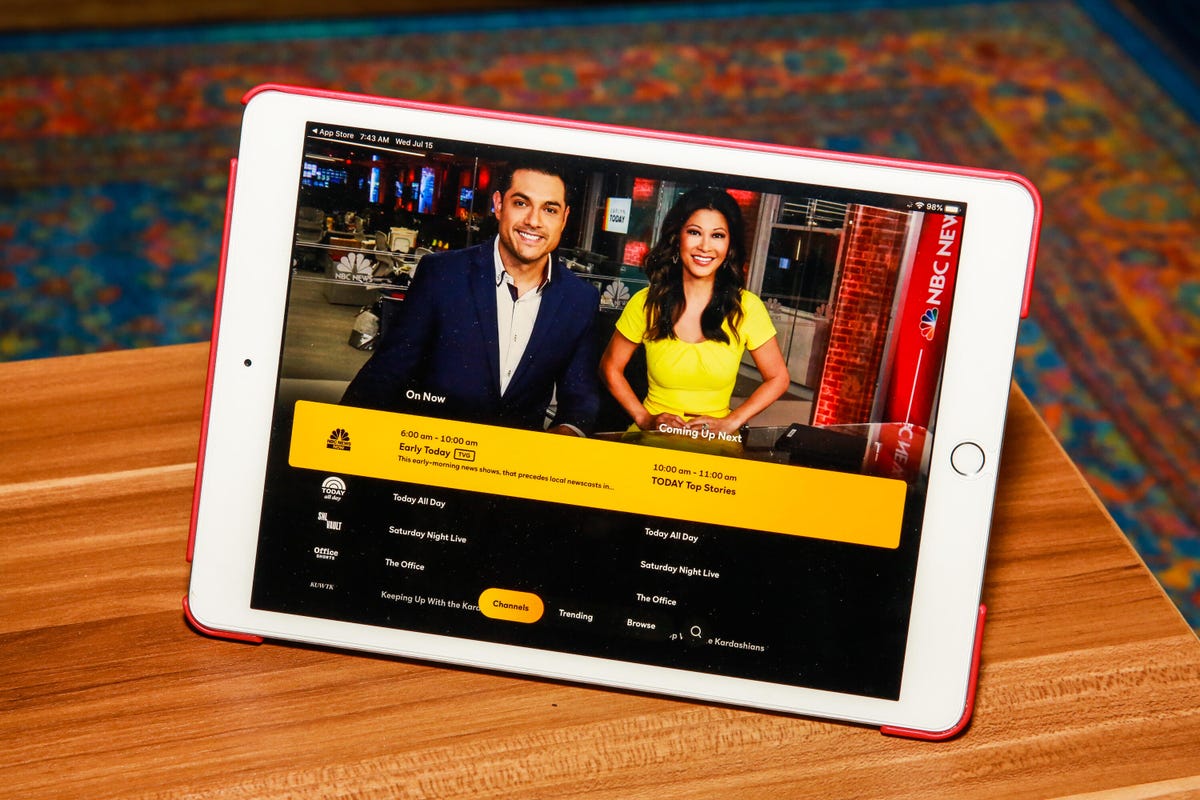
Since its launch in July 2020, Peacock, NBCUniversal’s streaming service, has seen a bump in growth. After adding new episodes of NBC shows, Hallmark content and Days of Our Lives to the streaming platform, it’s leveling up its new and original content offerings. Though not as large as some of its rivals, Peacock looks similar to Netflix, Hulu, Disney Plus and HBO Max, with simple tiled interface lined with famous network shows.
But unlike those other services, Peacock has a version that’s completely free to watch with ads. In that respect it’s similar to free streaming services such as Pluto TV, Tubi and Roku Channels, but with a better selection. Peacock’s free tier offers about 40,000 hours of ad-supported content. You’ll find shows, movies, news, live sports and skit-style clips, with standouts including The Office, Parks and Recreation, Modern Family and 30 Rock.
Like
- Strong free version
- Large back catalog of shows and movies
- Live news and next-day access to some NBC shows
- Live sports like WWE and the Olympics
Don’t Like
- Full access to major shows, originals and live sports isn’t free
- Few original series or newer movies
- Missing features like mobile downloads for all tiers and 4K HDR
The catch? Many marquee series only include the first two seasons with the free tier — you’ll need to upgrade to Peacock Premium at $5 a month to binge it all. Popular shows like Bel-Air and Yellowstone also only offer one episode on the free tier, with the rest behind the Premium paywall. And some shows, like Parks and Recreation and The Office, are only available as complete series on Premium.
Peacock’s live sports offering is a strength, although most live events require a Premium subscription. It has NFL Sunday Night Football, the US Open, MLB on Sunday mornings, WWE wrestling, Premier League and more.
If you upgrade to the Premium tier ($5 a month or $50 a year, with ads) or the Premium Plus tier ($10 a month or $100 a year), you’ll get access to the full catalog of 80,000 hours of content. Series include the Quantum Leap reboot, Vampire Academy, Real Housewives and Chicago Fire. You’ll also get next-day access to new episodes of all current NBC shows and even early access to Late Night with Seth Meyers and The Tonight Show Starring Jimmy Fallon the night they air.
The free version of Peacock is worth exploring, but whether you’re willing to pay $5 to $10 a month when you already have the other major streaming services will depend on how much you want to watch favorites like The Office, Days of Our Lives, Yellowstone and live sports.
Read more: Peacock free or Premium? Ads or no ads? Here’s how to pick the right streaming plan
How many ads does Peacock have?
I tested out Peacock’s ad-supported free tier and its ad-supported $5-a-month Premium tier. (You don’t need a credit card to sign up for the free account, just an email address, which is nice.) Peacock promises that you’ll see five minutes or less of ads per hour across both ad-supported tiers.
My experience varied depending on the show and device. While watching The Hitman’s Bodyguard on a Roku TV, there were six ads sprinkled throughout the film, ranging from 20 to 60 seconds each. Peacock even marks midroll ad breaks so you know when to expect them. But when it played on the iPhone app, there was a notice that we would watch 135 seconds of ads at the beginning, and none for the rest. That option would be great to have on the Apple TV too to get the ads out of the way, but unfortunately it’s not (yet).
After scrolling around and watching a bunch of ads, when I went back to start The Hitman’s Bodyguard again, there were no ads at all, because I had already seen 5 minutes’ worth in the previous hour. It does seem like if you pop in and out of a movie or show, the ad count may reset. When I streamed the movie Nope, there was only a 2.5-minute set of ads before the movie, with no commercials during the film. And The Godfather’s three-hour runtime didn’t have any ad interruptions.
On episodes of Saturday Night Live, there were seven to nine ads sprinkled throughout the episode on both mobile and TV. Modern Family had three to four ad breaks within one 23-minute episode. This is about the same ad experience as watching on Hulu’s $8-a-month ad-supported plan, or on regular live TV — except it’s free.
It’s also worth mentioning that some subscribers to the most-expensive, ad-free, paid version will still see ads on «a small amount of programming, Peacock channels, live events and a few TV shows and movies,» according to Peacock.
Familiar navigation (for the most part)
Peacock’s homepage and Browse section is similar to those of other streaming services. There’s a big carousel of «hero» tiles at the top and rows of thumbnails below, labeled Peacock Picks, Continue Watching, Peacock Originals, Featured Films and so on. For Pride Month, there’s also some carousels highlighting LGBTQ movies and TV shows including Modern Family and Queer as Folk. Peacock now offers some 4K content, which is labeled separately from the rest of the catalog, making it easy to find. You can also seamlessly search for specific titles, but if you type in «originals,» it won’t spit out a list of Peacock Originals.
Peacock does have a Kids page with a couple of shows like Barney and Curious George on its free tier, but its most popular shows, including Dreamworks’ Dragons: Riders of Berk and The Croods: Family Tree, are only available with a paid subscription. Parents do have the option of setting a PIN-enabled parental lock to limit the age range of content displayed, but there’s unfortunately no option to filter out Premium content, which may leave kids frustrated at how many shows are unavailable to them.
Premium shows are mixed in with free offerings, denoted by a little purple feather in the top left corner. It reminds me a bit of Amazon Prime Video, which has shows included in your subscription mixed in with those you have to pay extra for. The app isn’t forceful in trying to get you to upgrade, though: You’ll only be asked if you want to change to premium if you click on a premium-only show, or if you go to your Account page. You can stream on up to three devices simultaneously from one account.
Browsing deep into NBC’s back catalog
One of Peacock’s biggest advantages is its access to NBC’s strong catalog of content, as well as its sister networks and entertainment properties, including Bravo, USA Network, Syfy, Oxygen, E!, CNBC, MSNBC and Universal Pictures. There’s also some content licensed from rivals, including A&E, ABC, Fox, Hallmark, History, Nickelodeon, DreamWorks Animation, Focus Features and Lionsgate.
Some of the best shows available on the free tier now are Saturday Night Live, 30 Rock, and Downton Abbey, and you get all seasons of each (with the exception of 30 Rock, which is missing one season). Upgrade to premium to get the complete run of older shows including Cheers, Frasier, House and Two and a Half Men. For some shows, however, you get only a recent handful of seasons or episodes, even on premium. For example, you’ll only find the first season of Chucky.
The catalog is far from complete, however. Some shows you might associate with NBC, like Friends, Seinfeld and Scrubs aren’t on Peacock, and don’t seem to be coming any time soon. So far, the most successful Peacock originals have been the Fresh Prince prequel drama, Bel-Air, The Best Man: The Final Chapters and Bravo reality shows including The Real Housewives of Miami and The Real Housewives: Ultimate Girls Trip. None have garnered quite the same buzz as other streaming platforms’ originals, such as Obi-Wan Kenobi on Disney Plus or HBO Max exclusive Peacemaker.
In the Movies category, you’ll find hundreds of titles, organized by genre, franchise, or what’s new in theaters. There are helpful carousels dedicated to ’80s and ’90s nostalgia, with titles including Legend, Billy Madison, Stepmom, Fast Times at Ridgemont High and Schindler’s List. And there are Peacock Originals such as Psych 3: This Is Gus.
However, Peacock’s big-name movies don’t always stick around for long. Jurassic World Dominion and Minions: The Rise of Gru are set to leave Peacock in January 2023, for example. Others that have come and gone include the Harry Potter movies, Do the Right Thing and Phantom Thread. But, you can check Peacock to see when a given title is leaving a platform.
Peacock helpfully displays Rotten Tomatoes ratings, both showing the critics’ score and the audience score. Movie thumbnails may include a red-tomato, «fresh» rating but don’t display a score if the movie is rated «rotten.» You can see the score for any movie with a Rotten Tomatoes rating, alongside the audience score, after selecting it. The platform has boasted some immediate streaming rights for theatrical releases, including Jennifer Lopez’s Marry Me, Halloween Kills and 2022’s Firestarter. In October 2022, Halloween Ends had a same-day premiere on Peacock.
‘Channels’ mixes live TV and on-demand
From Browse, you can navigate to the Channels section of the app, which is another hodgepodge of free content. Channels looks kind of like a cable box grid guide, but instead of various networks and cable channels, you get themed channels around Peacock’s programming. These include NBC News Now, Best of WWE, Dateline 24/7, True Crime, and Today: All Day. In addition to more recent programming, some channels focus on older content, from Fallon Tonight, which shows old episodes of The Tonight Show, to SNL Vault, Classic TV, and the Bob Ross Channel. There is also Spanish-language content from Telemundo.
The biggest appeal to Channels for many will likely be its live sports and news programs, which offer a decent selection of live NBC programming without the need for a subscription. These include NBC News Now, Sky News, NBC channels for major cities like New York and Los Angeles, and NBC Sports. You’ll also find NBC’s new 24-hour version of the Today Show, called Today All Day, though that includes repackaged Today segments and more lifestyle programming than straight news. However, unlike live TV streaming platforms such as YouTube TV or Hulu With Live TV, there’s no option to record programming to a DVR.
Still MIA: Mobile downloads for all
While there’s not too much to complain about in the free tier, the premium offerings still lack consistent features that competitors like Netflix and Hulu already have. Mobile downloads are still limited to Premium Plus subscribers, the service’s most expensive tier.
Should you get Peacock?
It’s free, so why not try it out? If the ads bug you or you want to watch one of the original shows, you can try out its premium tiers free for seven days as well, or find other deals depending on your platform and cable provider; some cable customers can get it for free.
Will Peacock make it onto your daily streaming routine, alongside Netflix and Hulu? Probably not, at least in the short-term. But is it a great free option for finding some older movies and shows you might have missed (or want to watch for the millionth time)? Definitely. If you don’t mind watching a few ads, it’s a fun place to explore older movies and a big mix of TV shows, and keep up with current NBC shows, reality TV, news and some live sports in one spot — especially if you’re already a cord-cutter and looking to expand your options for free.
Technologies
Sora and Google’s Nano Banana Pro Are Slammed, and Scale Back Free Videos and Images
OpenAI and Google are reducing the number of image or video requests you can make on their latest media-generation platforms.
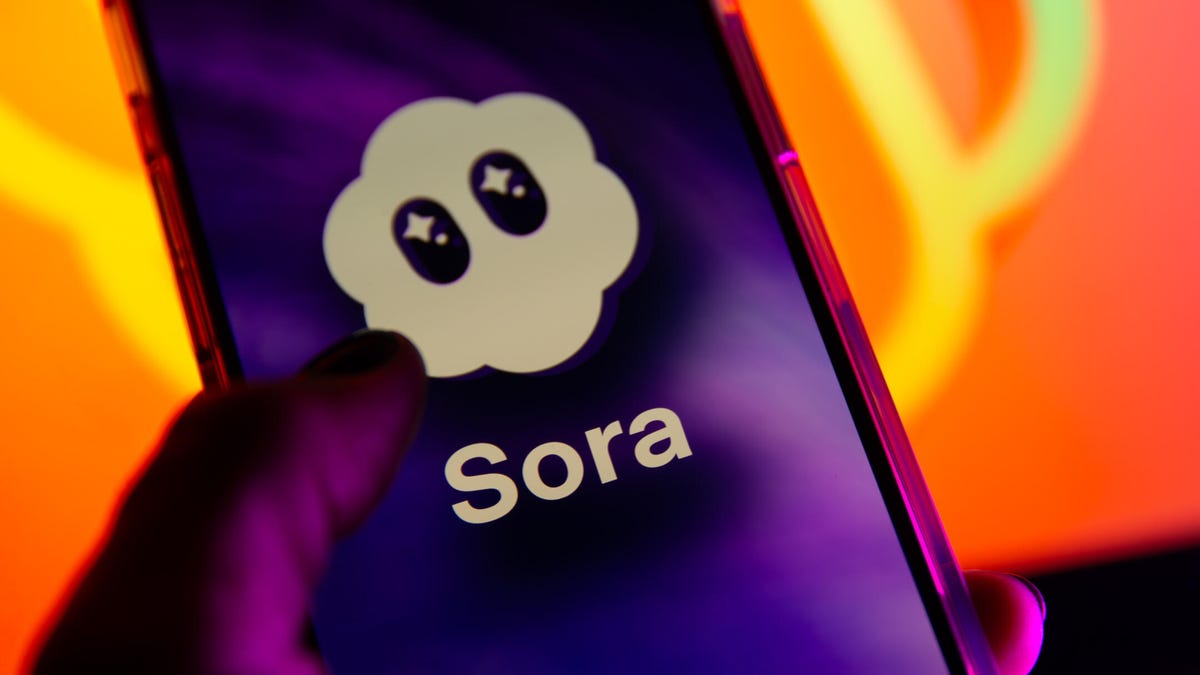
Maybe it’s because of the holiday weekend.
OpenAI’s video generator Sora and Google’s image generator nano banana pro are placing new limits on how many videos (in the case of Sora) and AI images (in the case of nano banana pro) you can make per day.
With more people using their Thanksgiving weekend idle time to, say, make AI videos of cats as angry service industry cashiers, it’s likely these services are hitting their limits.
Bill Peebles, OpenAI’s head of Sora, posted on X, «our gpus are melting, and we want to let as many people access sora as possible!» GPUs are the graphics processing units used by AI services for the complex computations they need to perform.
Peebles wrote that Sora will limit free video generation to six videos per day. ChatGPT Plus and Pro accounts won’t see any changes.
«And everybody can purchase additional gens as needed,» he wrote.
Don’t miss any of our unbiased tech content and lab-based reviews. Add CNET as a preferred Google source.
Gemini limits
As for Google’s image generator, a Gemini support page says that those without a Google AI plan are now limited to two images generated and edited per day with nano banana pro. The previous limit was three, according to 9to5Google, which also spotted new usage limits on Gemini 3 Pro that are variable. The same support page says free access to Gemini 3 Pro Thinking includes «Basic access — daily limits may change frequently.»
The limit for nano banana (the previous 2.5 non-pro version) is 100 free images per day.
A representative for Google did not immediately respond to a request for comment.
(Disclosure: Ziff Davis, CNET’s parent company, in April filed a lawsuit against OpenAI, alleging it infringed Ziff Davis copyrights in training and operating its AI systems.)
Technologies
If You Don’t Want to Pay AirPod Prices, I Found Great Noise Canceling Earbuds That Are Only $53 for Black Friday
You don’t need to spend a fortune to get a great pair of earbuds.
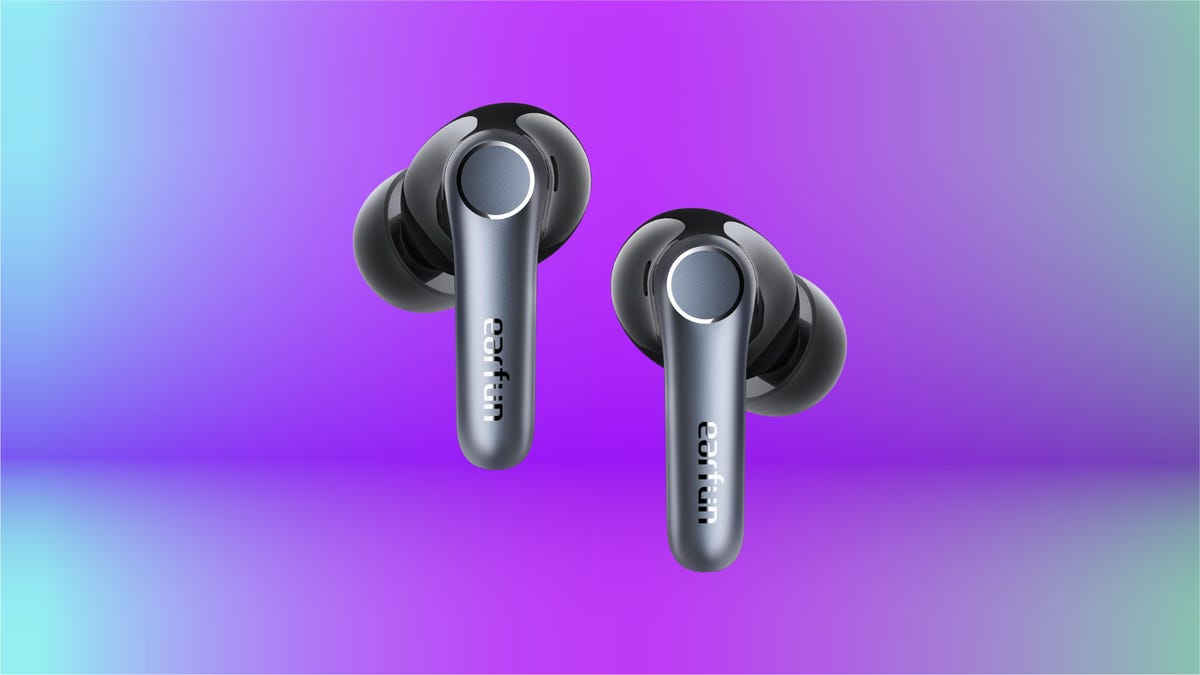
Black Friday deal alert: If you’re looking for a new pair of noise-canceling earbuds, there are some good deals on Apple AirPods right now, but you might be able to spend half as much to get similar performance. I’ve found that the Air Pro 4 earbuds from Earfun are legitimate contenders to the AirPods, at a much lower price. Right now at Amazon for Black Friday, you can get the Air Pro 4s for a steal — they’re 34% off, which drops their price down to $53.
In short, they’re great, and the black ones are currently available on Amazon for $53, near the lowest price we’ve ever seen them sell for. The other colors are also on sale; the glossy white and royal blue are both $68.
Hey, did you know? CNET Deals texts are free, easy and save you money.
HEADPHONE DEALS OF THE WEEK
-
$248 (save $152)
-
$170 (save $181)
-
$199 (save $150)
How these earbuds silence the noise around you
I prefer in-ear headphones because they offer active, electronic and passive noise cancellation. Passive noise cancellation basically consists of plugging your ears with the rubbery tips included with the earbuds.
The Earfuns fit well for me when I use the second-largest of the five swappable ear tip sizes, and they stay sealed and comfortable for hours. Sometimes I have to reseal one after I yawn or something, but that’s the case with other in-ear headphones, too.
For reading, I prefer Earfun’s «Strong ANC» noise-canceling mode, which makes a big difference when blocking out the noise around you, but there are a bunch of other noise-cancellation options. The Ambient Sound function is good for when I want to pay attention to my surroundings.
Overall, I found the app easier to use than Sony’s and just as capable. The main difference is that Sony’s app has a variable slider for ambient sound.
The Earfun app also includes a white noise section in the app. Normally, I prefer Spotify for white noise (and I download my favorite playlists for offline listening) but this feature is useful for people who don’t have another music service. It includes birdsong, waves and rainfall, all of which are short clips that repeat automatically.
Why I chose these earbuds over AirPods
These headphones have every other feature I’d expect, including the ability to connect to two devices simultaneously and programmable touch-sensitive controls on the buds. Plus, battery life has been more than ample for me, even after a marathon reading session.
There’s also a finder function if you misplace either earbud (unlike Apple FindMy, however, they have to be connected and in Bluetooth range). For actual music and voice calling quality, they sound fine, albeit not as good as my big Sonys.
I have an iPhone and briefly thought about buying Apple AirPods, but I didn’t want to spend the money. The AirPods 4 with noise cancellation cost $115 more than these Earfuns and have an open-ear design, so they rely entirely on the electronic (not passive) method. The AirPods Pro 2 are in-ear and superb, but I didn’t want to spend $250 on a pair of secondary headphones.
Yes, I could probably save some money on an even less expensive pair of in-ear noise-cancelling headphones, but I’m not sure I’d be as happy with their fit, long-term comfort, battery life and noise-cancellation performance. The Earfun Pro 4 buds help me relax and concentrate on my book, and for me that’s priceless.
For more headphone savings, check out our roundup of all the best deals on headphones, or find bargains of all kinds in our roundup of the best Amazon Prime Day deals going on now.
Join Our Daily Deals Text Group!
Get hand-picked deals from CNET shopping experts straight to your phone.
By signing up, you confirm you are 16+ and agree to receive recurring marketing messages at the phone number provided. Consent is not a condition of purchase. Reply STOP to unsubscribe. Msg & data rates may apply. View our Privacy Policy and Terms of Use.
Technologies
I Have a Flashlight Fetish and My Favorite New Olight Is 20% Off for Black Friday
Olight’s sleek new pocket flashlight, the ArkPro, is normally $100. But it’s down to $80 for Black Friday and Cyber Monday.
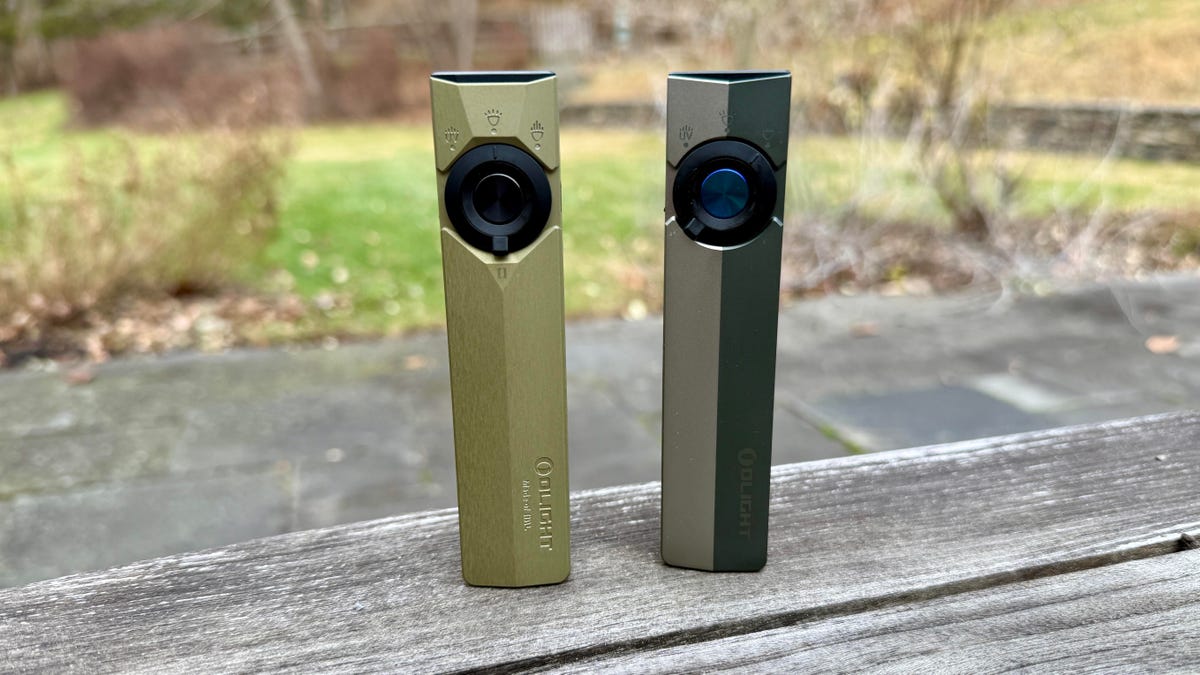
Truth be told be told, I have a thing for flashlights. Not a bad thing, just a certain appreciation for a well-designed torch, as the Brits might say.
Bright flashlights are good, naturally, but a small, sleekly designed rechargeable everyday carry flashlight that puts out a decent amount of light is high on my list of flashlight favorites, and the new Olight ArkPro and its slightly brighter sibling, the ArkPro Ultra, fit the bill. They’re both on sale for Black Friday and Cyber Monday for 20% off. The ArkPro is down to $80 ($100 list) while the ArkPro Ultra’s price has dipped to $104 ($130 list).
The flashlights are upgraded versions of Olight’s Arkfeld Pro ($70) and Arkfeld Ultra ($84), with higher brightness ratings. Both new models have similar flat, IPX7 waterproof designs with sturdy metal bodies and a magnetic base that allows you to attach the flashlight to anything metal. There’s also an integrated clip-on mount, and they come in cool white and neutral white color temperature versions.
You get three lighting modes: a 1,500-lumen floodlight mode (1,700 lumens for the ArkPro Ultra), an 800-lumen, 205-meter reach spotlight mode (it’s the same for the Ultra) and a UV light mode. You can also activate a green beam laser pointer.
The flashlights come with a wireless charger that magnetically attaches to the base, but you can also charge them via USB-C, which I found more convenient.
I mainly tested the flashlights while walking my dog at night in a pretty remote rural area in New York. The floodlight mode works better for dog walking, but I’d sometimes switch to spotlight mode when I wanted to gauge what was further ahead of us or check whether anything was lurking in the trees or bushes.
These smaller EDC flashlights are well-suited to a variety of activities, including camping and anything you’re doing where you’d like to have a flashlight handy that you can easily carry around in a pocket. You can find similar flat flashlight designs from other brands on Amazon — some of them for significantly less money. However, Olight is considered a premium EDC flashlight brand, though some flashlight enthusiasts are less enthusiastic about the brand for a few reasons. That said, I’m just fine recommending these new ArkPro models when they’re discounted like this. And they do make for nice gifts this time of year.
Join Our Daily Deals Text Group!
Get hand-picked deals from CNET shopping experts straight to your phone.
By signing up, you confirm you are 16+ and agree to receive recurring marketing messages at the phone number provided. Consent is not a condition of purchase. Reply STOP to unsubscribe. Msg & data rates may apply. View our Privacy Policy and Terms of Use.
-

 Technologies3 года ago
Technologies3 года agoTech Companies Need to Be Held Accountable for Security, Experts Say
-

 Technologies3 года ago
Technologies3 года agoBest Handheld Game Console in 2023
-

 Technologies3 года ago
Technologies3 года agoTighten Up Your VR Game With the Best Head Straps for Quest 2
-

 Technologies4 года ago
Technologies4 года agoBlack Friday 2021: The best deals on TVs, headphones, kitchenware, and more
-

 Technologies4 года ago
Technologies4 года agoVerum, Wickr and Threema: next generation secured messengers
-

 Technologies4 года ago
Technologies4 года agoGoogle to require vaccinations as Silicon Valley rethinks return-to-office policies
-

 Technologies4 года ago
Technologies4 года agoOlivia Harlan Dekker for Verum Messenger
-

 Technologies4 года ago
Technologies4 года agoiPhone 13 event: How to watch Apple’s big announcement tomorrow

